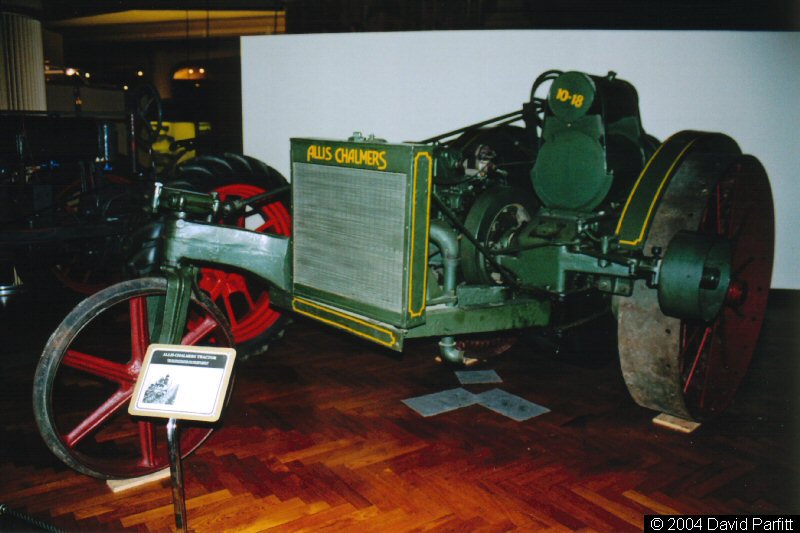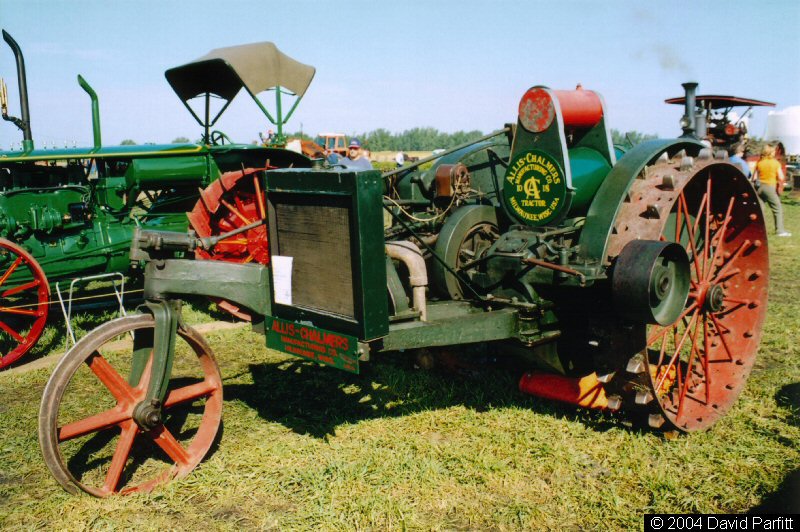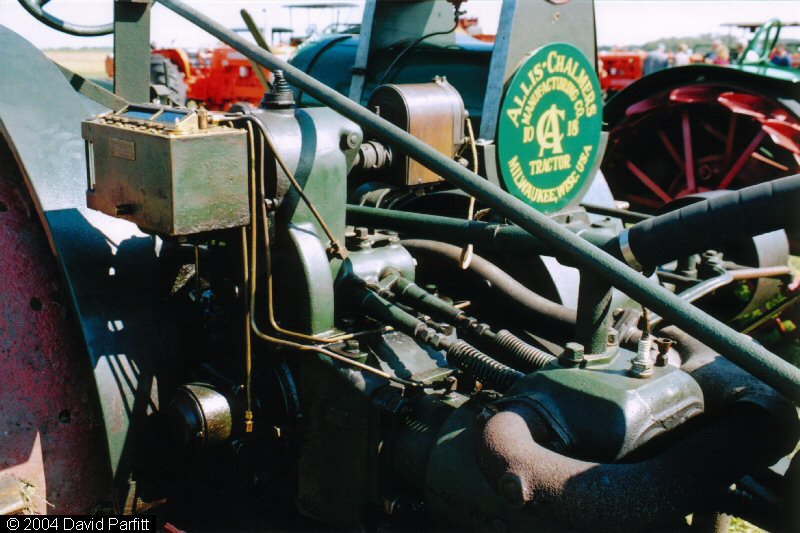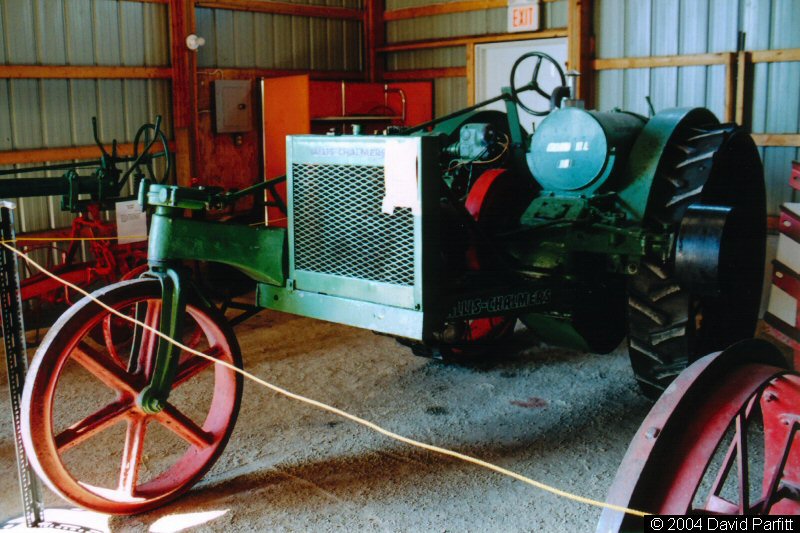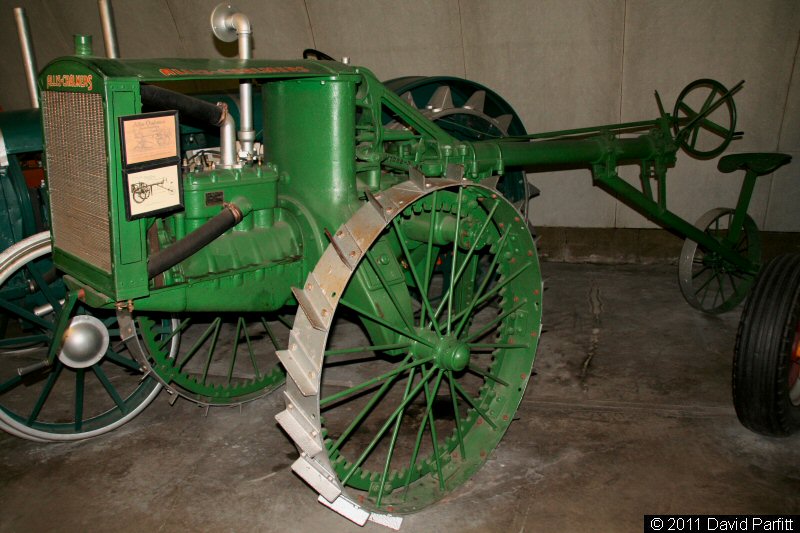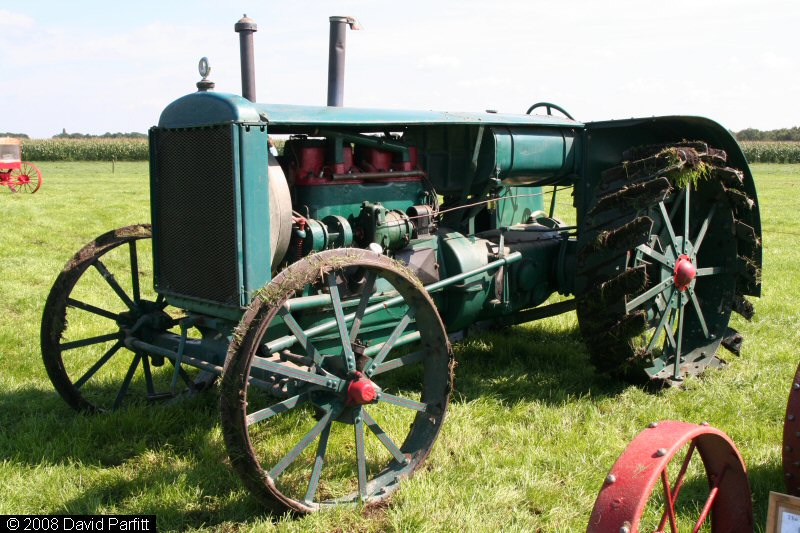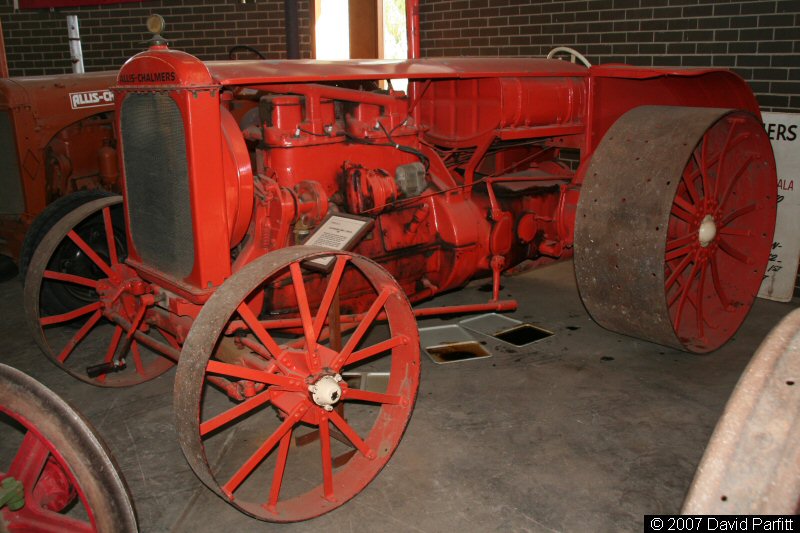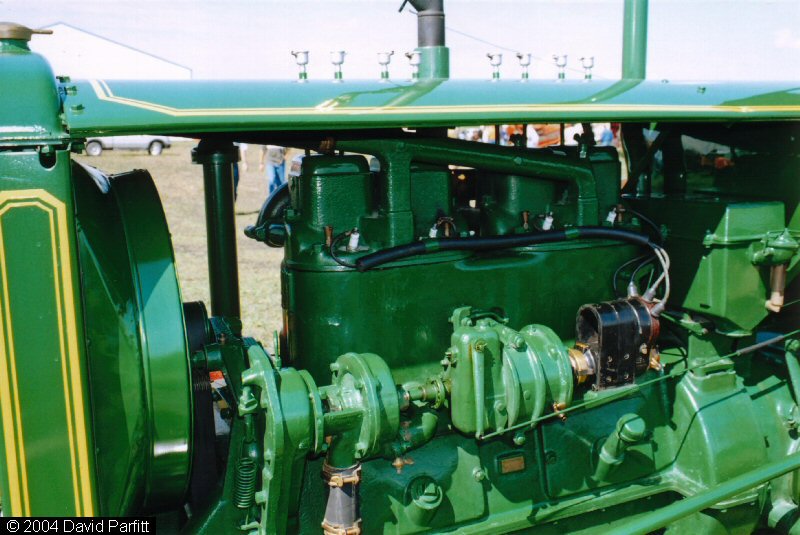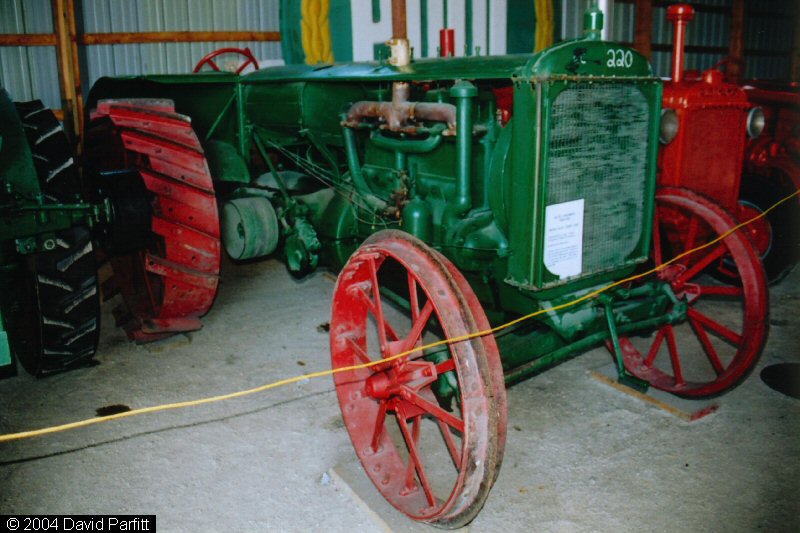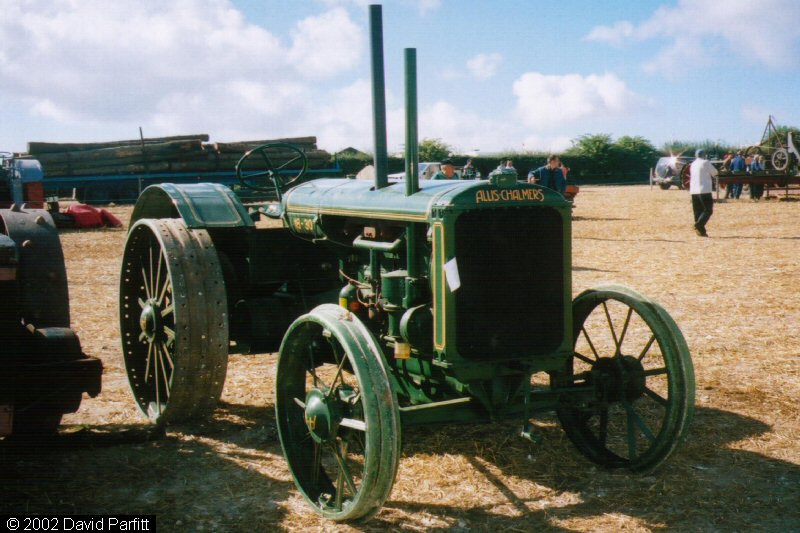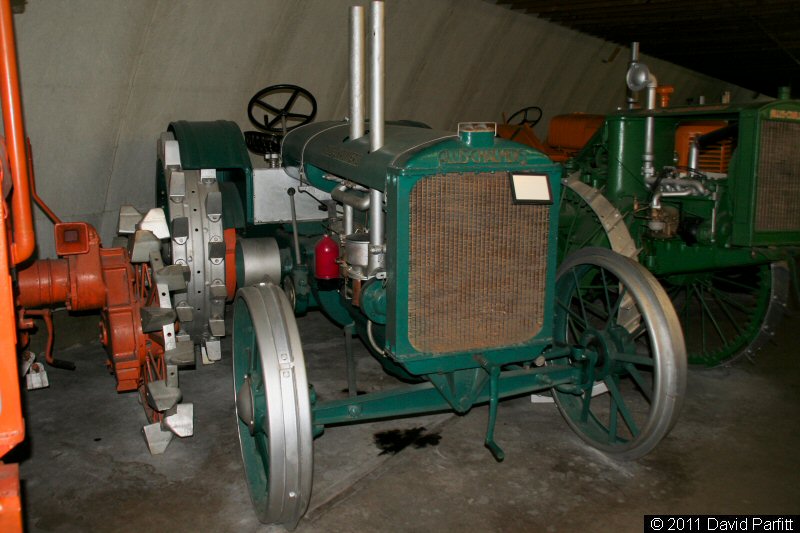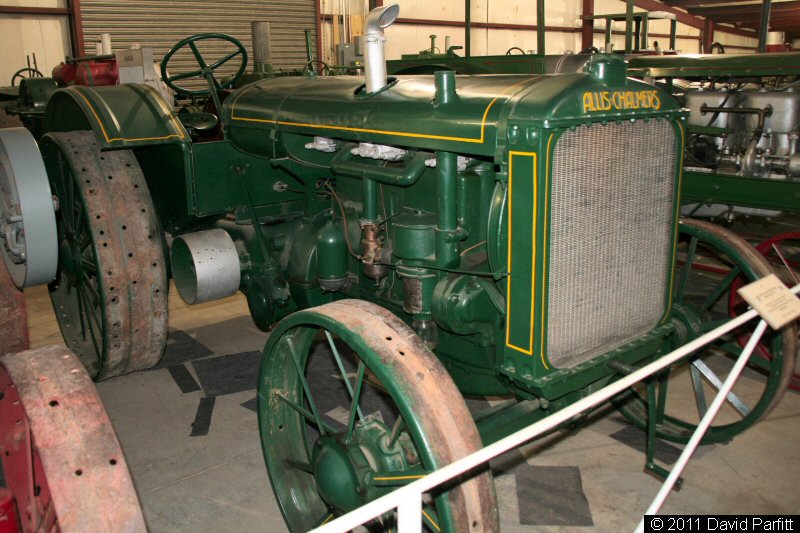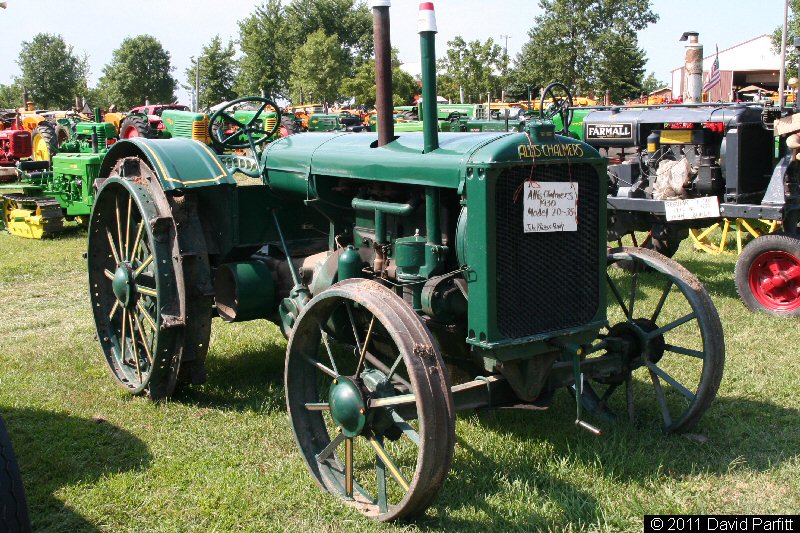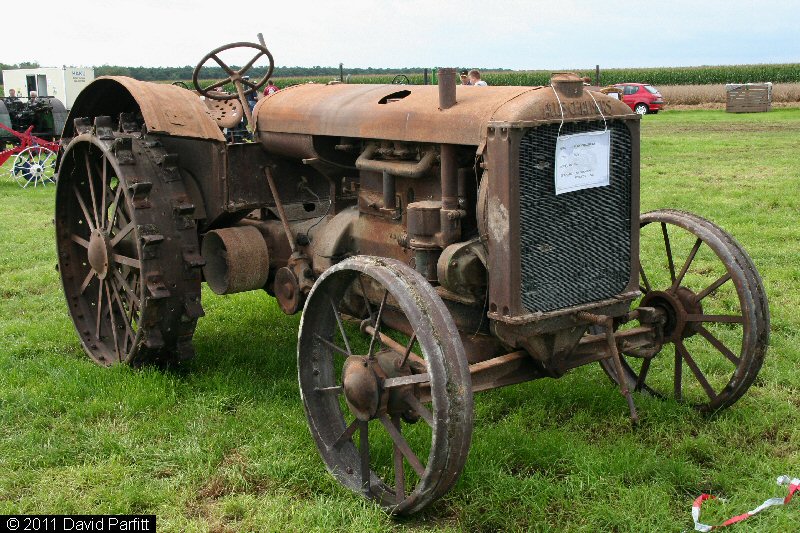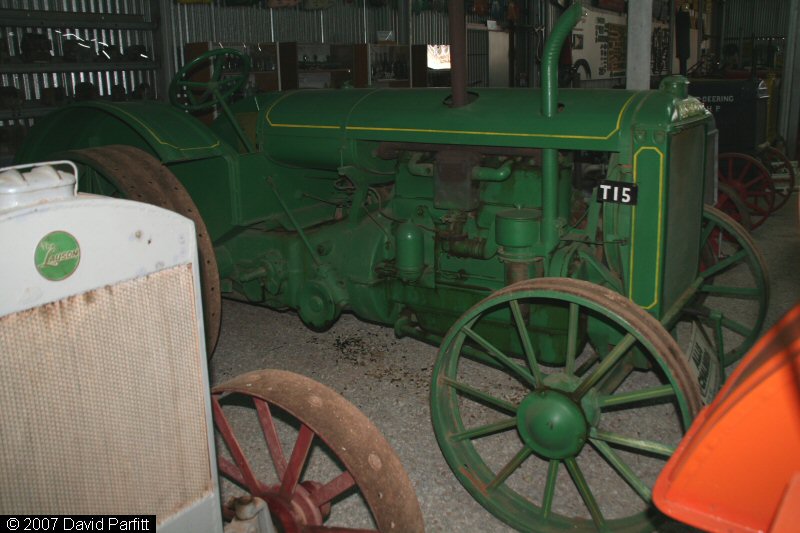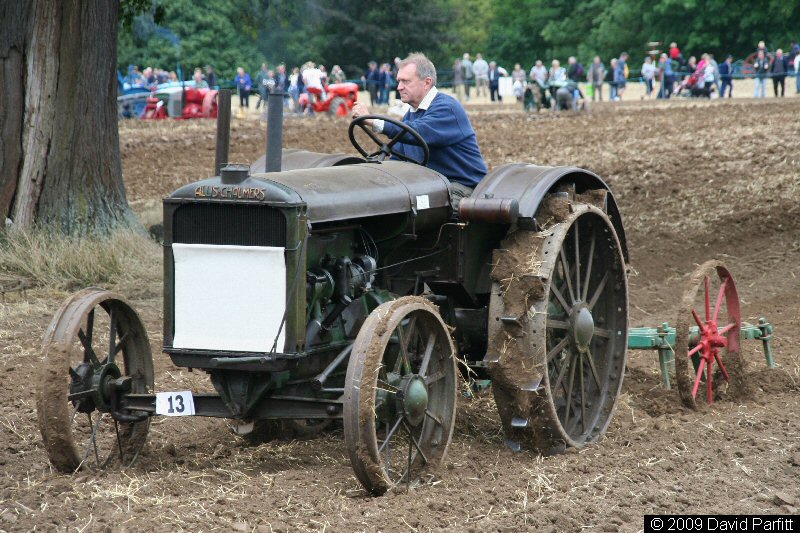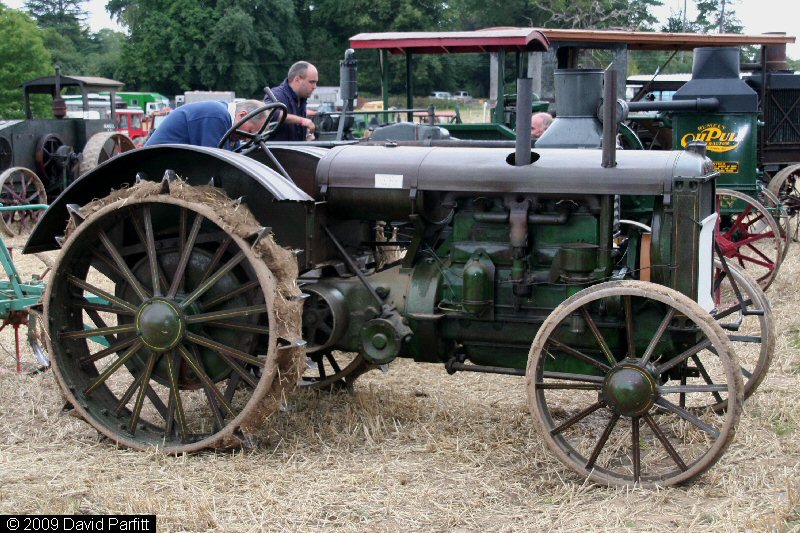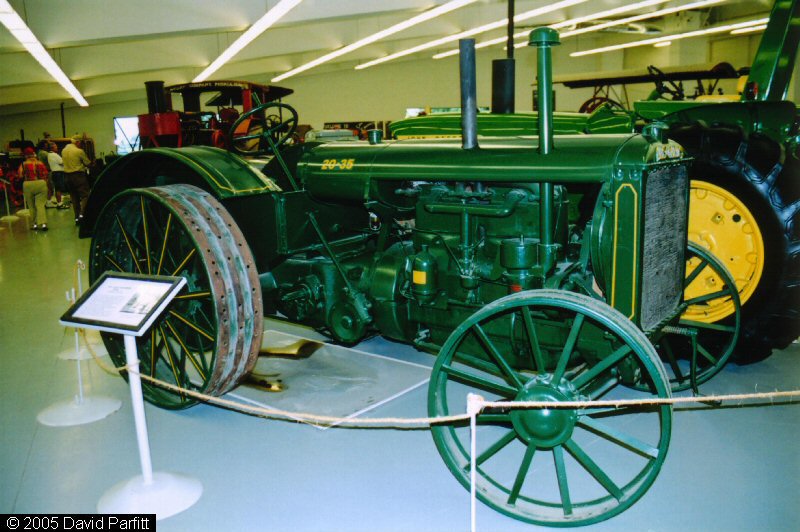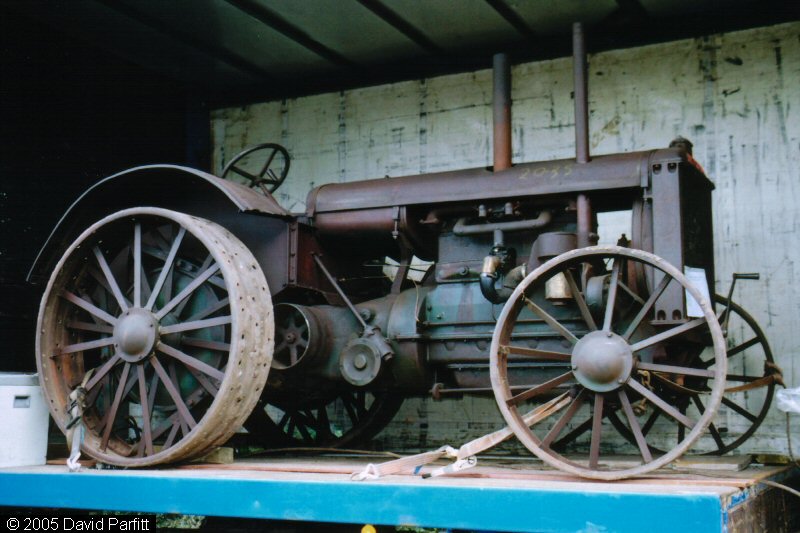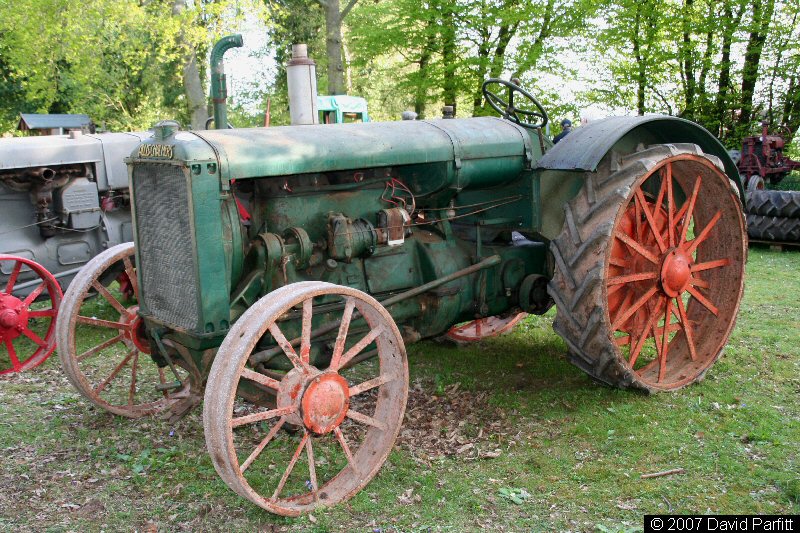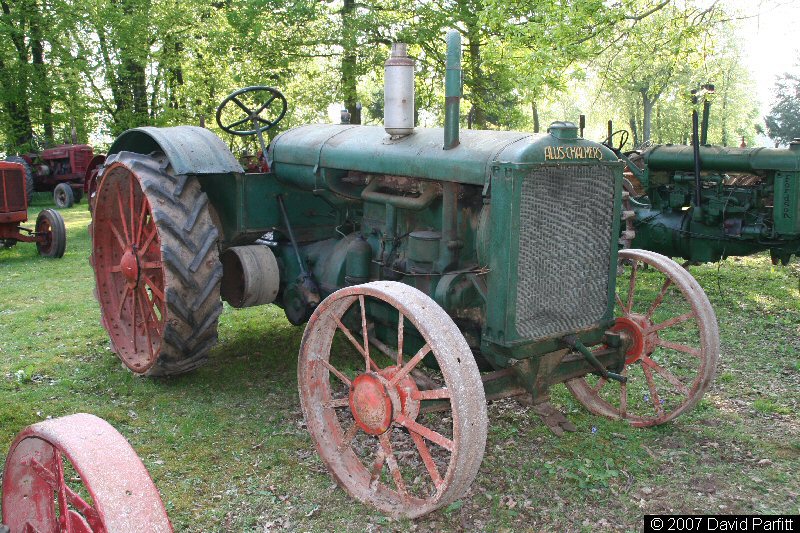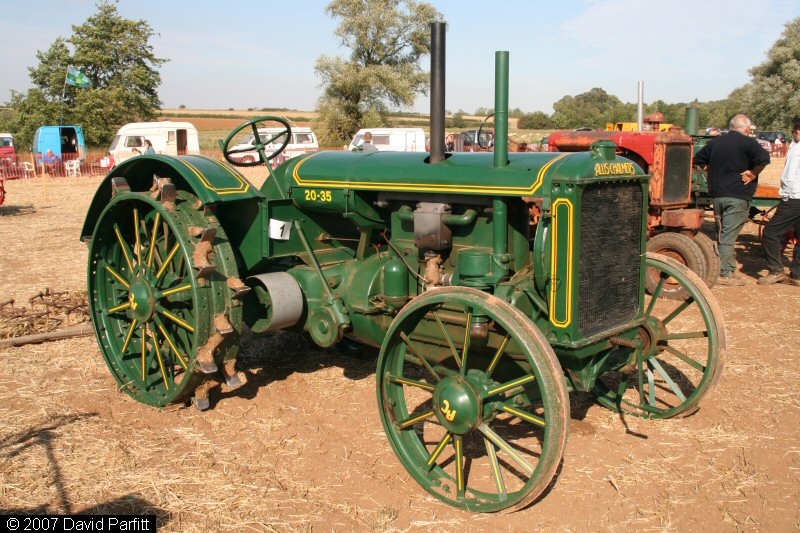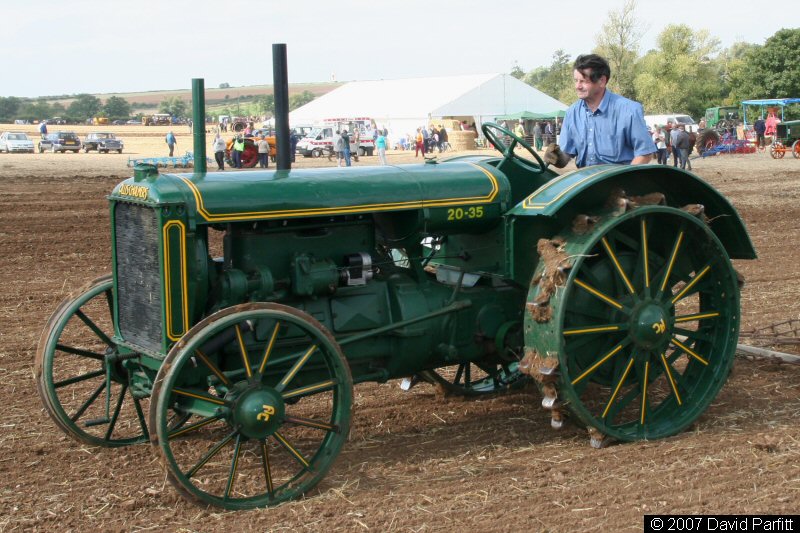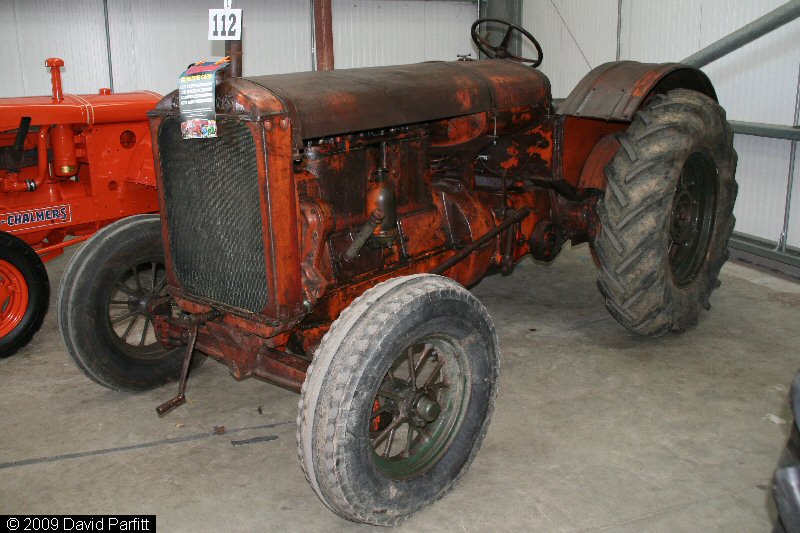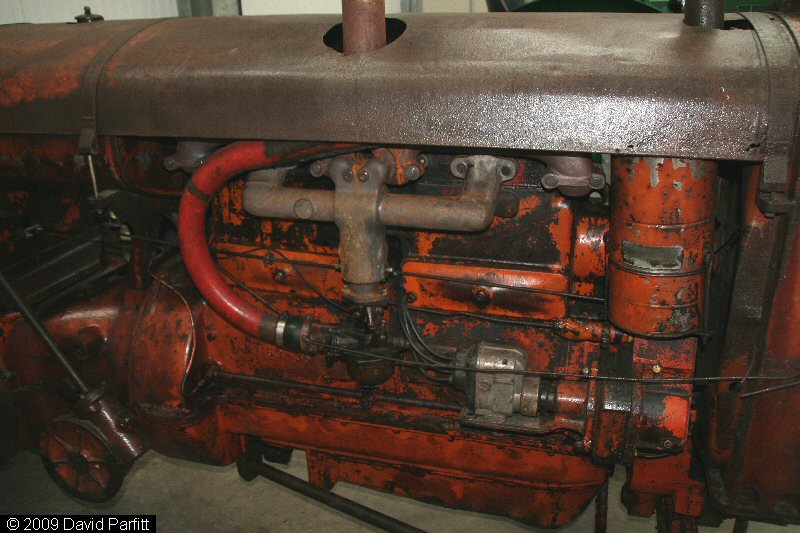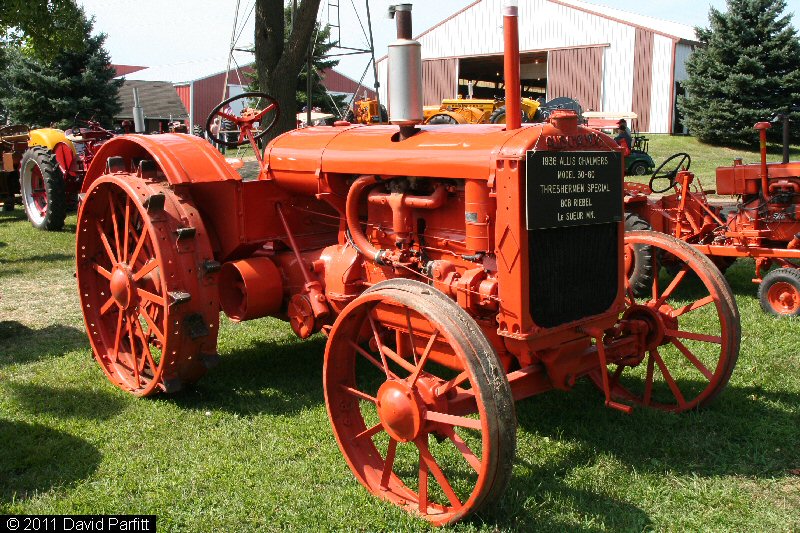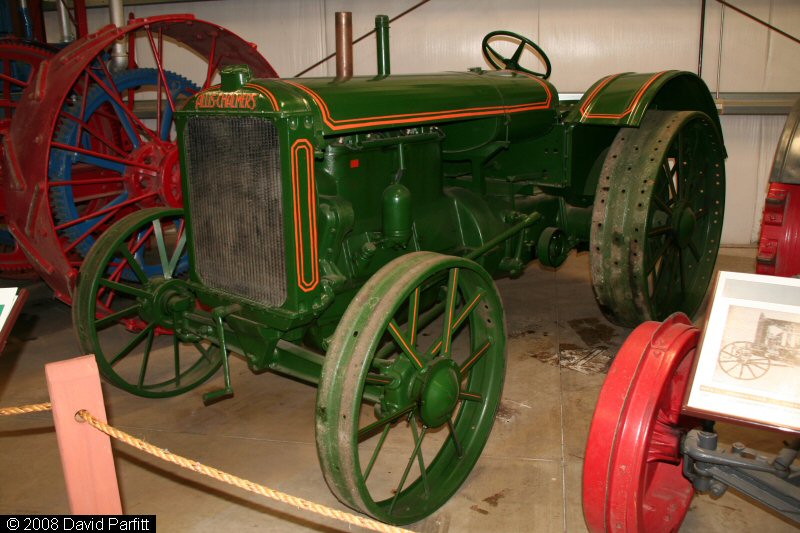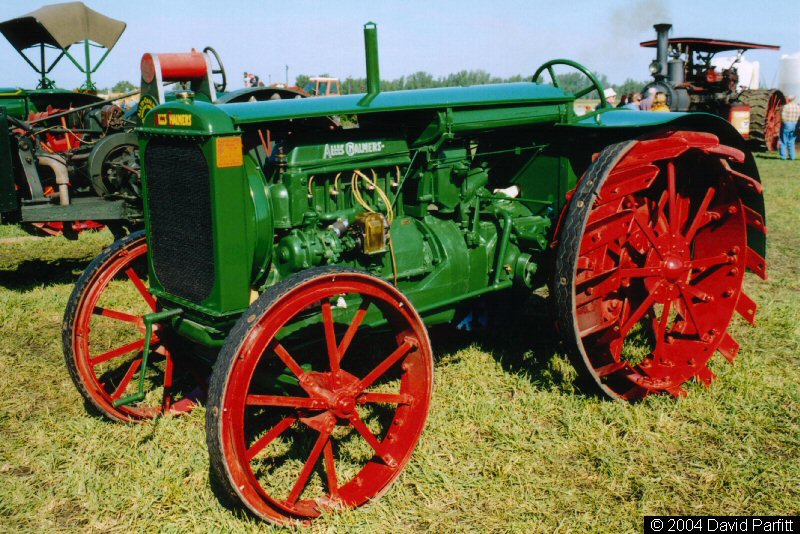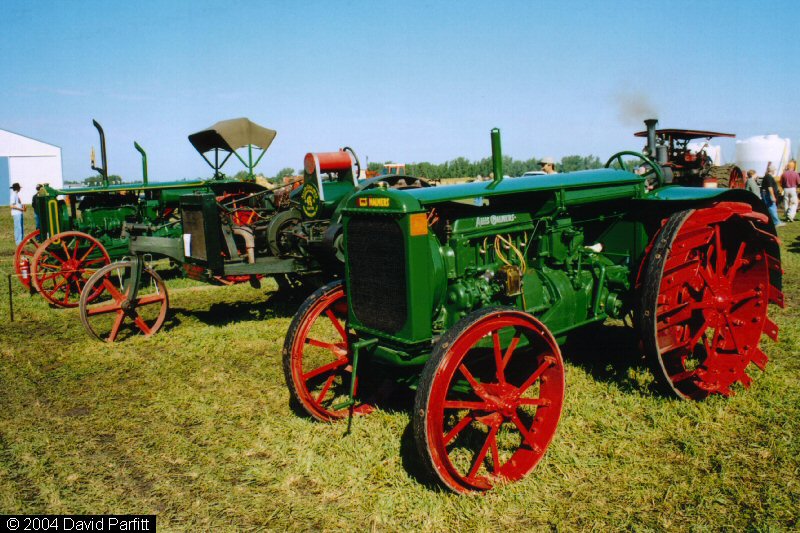Allis-Chalmers
Allis-Chalmers Manufacturing Co.,
Milwaukee, Wisconsin, USA
History
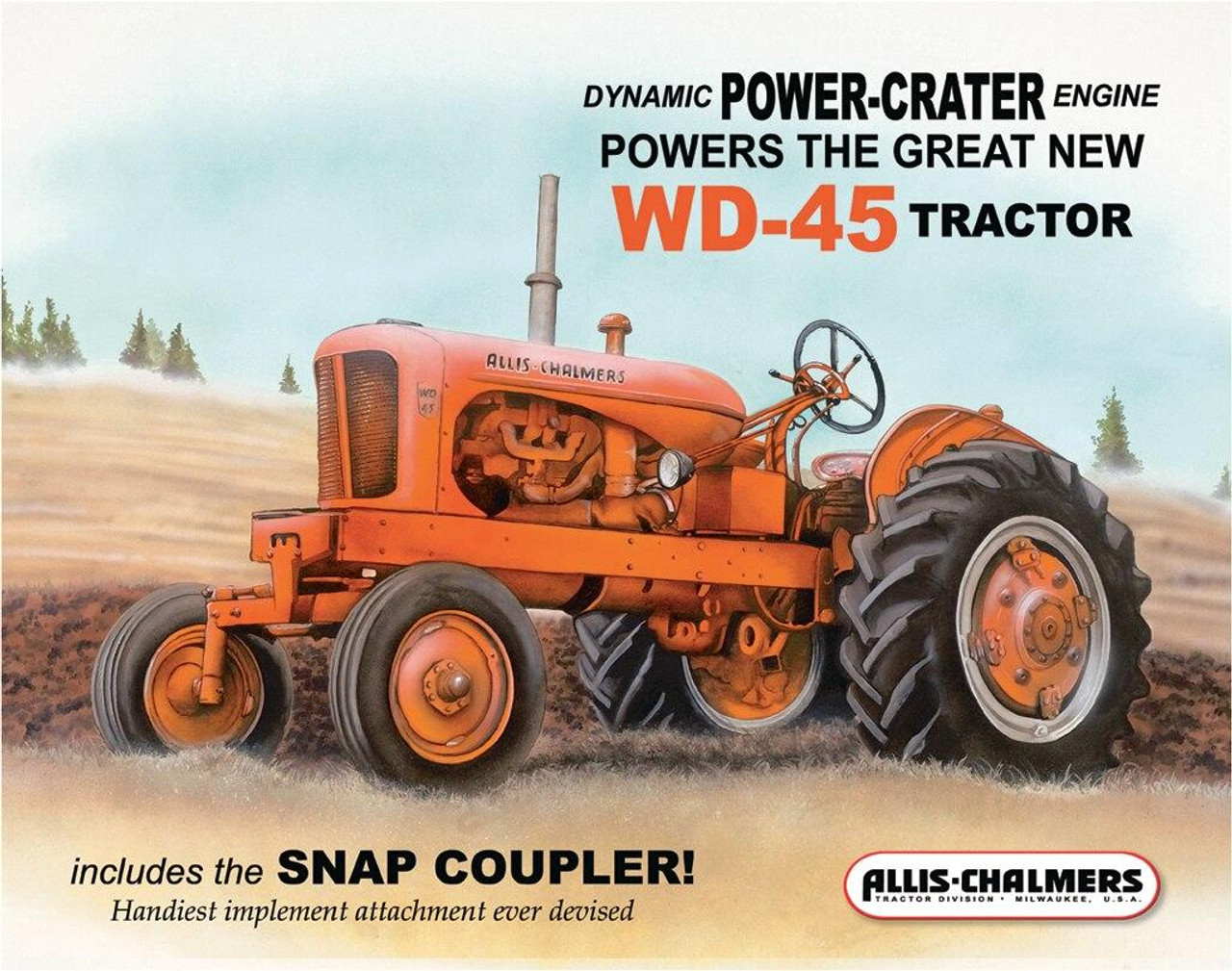 | Edward P. Allis & Co. was established in
Milwaukee, Wisconsin in 1861, and a few years later they built their
first steam engine. In 1878 they began to produce the
Reynolds-Corliss engine, the most advanced design of that era, and
by the turn of the century orders for these were pouring on from all
over the world. In May 1901, Edward P. Allis & Co. joined with a
number of other companies, including Fraser & Chalmers of
Chicago, Illinois, to form Allis-Chalmers. The merger added items
such as mining equpiment, cement-making machinery and locomotives to
the A-C product line. By the end of the decade, Allis-Chalmers had
expanded significantly and employed over 10,000 people. Such growth
and diversification came at a price though, and by 1912 the company
was on the verge of bankruptcy. On 8th April 1912, the company was
placed in the hands of receivers, Delmar W. Call and General Otto H.
Falk.
The Allis-Chalmers Manufacturing Co. was formed on
April 16th 1913 with Otto Falk as its president, and it was he who
was largely responsible for the introduction of farm equipment to
the A-C product line. The first step in this direction was an
agreement to build under license a self-propelled rotary cultivator
developed by Motoculture Ltd of Basel, Switzerland. Such designs
were quite popular in Europe at the time, but Allis-Chalmers was
unable to persuade the American farmer of their benefits. The second
venture undertaken by Falk was the construction of a tractor-truck,
which was equally at home in the field and on the road. This
half-track design, which appeared around 1915, was unfortunately
ahead of its time and priced too high, although a batch of ten was
sold to Russia. At least one of these was fitted with armour-plating
and a gun, and participated in the Russian Revolution and subsequent
civil war.
At the same time Allis-Chalmers was also developing
its first true tractor, the three-wheeled 10-18 model, a prototype
of which was completed by November 1914. This was heavily influenced
by the best-selling Little Bull tractor of the same period - in
fact, Falk had already been approached by the Bull company with a
proposal for co-production, but had declined in favour of Allis
producing their own design. Serial production of the 10-18 began the
following year, but it never matched the success of the Bull, as the
design was already becoming outdated and farmers were looking
towards more conventional four-wheel designs. In spite of this.
Allis pushed ahead with their plans for a successor to the 10-18,
the little 6-12 model, a lightweight machine based this time on the
"Universal" tractor produced by the Universal Tractor Co. of
Columbus, Ohio. (It was so similar in fact, that when Moline took
over the Universal Co. in they successfully sued A-C for copying the
design.) The 6-12 proved to be another commercial failure though,
and even the novel idea of joining two 6-12s back to back to double
the power, was not enough to tempt farmers, especially as the
Fordson was already begininng to make its presence felt.
Allis's response to this was the 15-30 model, its
first conventional four-wheeled tractor, and also the first to use
its own design of four-cylinder engine. Introduced in 1918, the
horsepower rating proved too conservative, and the uprated 18-30
that appeared the following year was the first of the highly
successful Model E series. Special versions of the Model E with more
powerful engines and various extras were also offered to try and
tempt threshing crews away from steam power. The introduction of
testing at Nebraska saw the 18-30 evolve further into the 20-35
model, and when this tractor was given a thorough re-design in 1927
by Harry Merritt and the price was also cut significantly, sales
went from strength to strength. Less sucessful though was the
smaller 15-25 Model L, which had been introduced in 1921 with a
12-20 hp rating, and was aimed at farmers who perhaps did not need
the extra power of the Model E. This tractor was entering an already
overcrowded marketplace, however, and sales of the Model L were low,
although at least one tractor made it as far as Australia!
In the late 1920s, Allis made another attempt at
building a smaller tractor, this time with far more success. The
Model U, which appeared in 1929, was the first tractor to feature
Allis's new Persian Orange colour scheme, another of Harry Merritt's
initiatives. It was also one of the first tractors to use pneumatic
tyres. The purchase of the Monarch company in 1928 allowed A-C to
break into the crawler market, and it also diversified into
harvesting equipment in the 1930s. It was the Model U and its
successors that really put Allis-Chalmers on the map as far as
tractor production was concerned though, and A-C went on to become
one of the world's largest producers of tractors, with factories in
Europe and Australia. In fact, the distinctive orange tractors
continued to be built until 1985, when the company was purchased by
Germany's Klockner-Humboldt-Deutz, which in turn became part of the
giant AGCO Corporation in 1990.
Model Details
Model 10-18
(1915-1921)
Allis-Chalmers 10-18
(click on image to enlarge)
 | Production of the 10-18 model began in 1915. The
first ones built ran on petrol only, but the following year a
paraffin (kerosene) version was introduced that only used petrol for
starting. The engine was an A-C two-cylinder opposed design of 5.25
x 7 in bore and stroke that ran at 720 rpm, with a Detroit
force-feed lubricator, Kingston double-bowl carburettor and either
K-W or Kingston high-tension magneto. The tractor had only a single
forward and reverse speed, with drive via exposed pinion and bull
gear. It is not known how many 10-18s were built as production
figures for 1914-18 are lacking, but numbering most likely began
with 1001. Some 10-18s were exported, and this model was sold in
France as the "Globe" via an agency in Paris.
Model 6-12
(1919-1926)
The little 6-12 appeared in 1919 and in common
with several other similar machines of that era, it was powered by a
four-cylinder LeRoi Model 2C petrol engine of 3.125 x 4.5 in bore
and stroke running at 1000 rpm (and later 1200 rpm). It had a single
forward and reverse speed and was fitted with a Kingston Model L
carburetor and either an Eisemann or Splitdorf (Dixie) magneto. The
tractor was articulated just behind the rear axle and the single
rear "sulky" wheel (later replace with two wheels) could be
substituted with a range of implements, including existing
horse-drawn ones. In illustrations it was often paired with an
Oliver single-furrow plough. A total of 1471 A-C 6-12 tractors were
built between 1919 and 1926, with serial numbers starting from
10001. A special Model B orchard version of the 6-12 with lowered
engine and covered wheels appeared in 1920, and an industrial
version with heavier flat-spoked wheels also appeared. However, the
most unusual modification was the so-called "Duplex" model, which
consisted of two 6-12s joined together back to back - this doubled
the power and gave four-wheel drive, supposedly allowing a
three-furrow plough to be used, but it does not seem to have been
very successful.
Model E 15-30/18-30
(1918-1921)
Allis introduced their first conventional
tractor, the 15-30, in 1918. It used their own make of engine, a
four-cylinder 4.75 x 6.5 in OHV unit that ran at 830rpm. Two forward
speeds were provided. The tractor had a sheet-metal radiator and the
engine compartment was enclosed by steel panels on the very first
tractors, although roll-down canvas curtains also made an
appearance. In 1919, after extensive field testing, the tractor was
remaned the 18-30 and the Model E designation also began to appear.
Among the cosmetic changes on the uprated model was the replacement
of the old radiator with a cast iron one that had raised
"Allis-Chalmers" lettering on the header tank, and flat-spoke front
wheels also seemed to appear around this time. Near the end of
production the engine speed was increased to 930 rpm. Both the 15-30
and 18-30 were designed to burn kerosene (after starting on petrol)
thanks to a special vaporizer on the manifold and a double-bowl
Kingston Model E carburettor, although the latter was replaced with
a Model L on later tractors that ran on petrol alone. K-W and Dixie
Model 46 magnetos were used at first, but these seem to have given
way to an Eisemann Model GS4 on later examples of the 18-30. A total
of 1160 Model 15-30 and 18-30 tractors were built, with serial
numbers starting from 5000.
Model E 20-35
(1923-1930)
Allis-Chalmers 20-35
"short-fender" version built from 1927 (click on image to
enlarge)
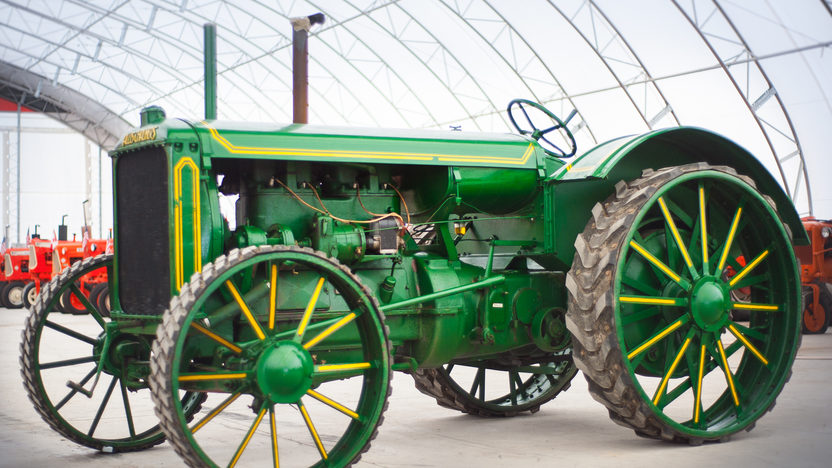 | After testing at Nebraska in September 1921, the
Model E 18-30 was renamed the 20-35 in 1922 advertising, although
production of this uprated model did not begin until the following
year. Serial numbers for the 20-35 started with 6161. The same
engine was used as in the 18-30, but the horsepower increase was due
to the 20-35 being equipped to run on petrol as standard, although
the kerosene-burning manifold remained an option (mainly for the
export market). The new 20-35 had a plain cast radiator header tank
with painted lettering. A "Special" version of the 20-35 with higher
compression (and hence horsepower), canopy, whistle and other
additional features was offered for threshermen at extra cost. A
road version with canopy, extra-wide rear wheels and disc-type front
wheels was also available.
In 1927, from serial no. 8070, the old
"long-fender" 20-35 Model E 20-35 received some major modifications:
it was equipped with shorter arched fenders (mudguards); the weight
and wheelbase were reduced; pressure lubrication was introduced;
wheels were now painted green instead of red; and the price was
reduced significantly. After serial no. 9870 the Kingston
carburettor was replaced with a Zenith Model C6EV. The next few
years also saw other improvements made to the transmission, clutch,
steering, etc. An uprated version of the Allis 20-35 was also sold
by the Banting Manufacturing Co. of Toledo, Ohio from 1925 - this
tractor, known as the "22-42 Greyhound Special", was designed for
threshing work and had a 5 in oversize bore, canopy plus other
optional extras. They seem to have been painted either grey or green
and featured the "Greyhound" name on the radiator up until 1930,
when it was replaced by "Banting Machine Co.".
Model E 25-40
(1930-1936)
The 25-40,
introduced in 1930, was the final incarnation of the Model E. The
same engine was used as on the 20-35, but the bore was increased to
5 in (with a 5.25 in version available for threshermen) and the
speed to 1000rpm. The 25-40 was also slightly heavier than its
predecessor. A kerosene version was still offered and pneumatic
tyres were also an option. The Zenith carburettor and Eisemann
magneto (now a Model G4) were also carried over from the 20-35.
Serial numbers started from 24186 and a total of 1425 25-40s were
built. In 1936 the Model E was replaced by the largely unsuccessful
Model A.
Model L 12-20/15-25
(1921-1927)
Allis-Chalmers 12-20
(click on image to enlarge)
 | The Model L 12-20, which appeared in 1921, was
the little brother to the 18-30. Intended as a three-plow tractor,
it was fitted with a four-cylinder Midwest engine of 4.125 x 5.25 in
bore and stroke running at 1100 rpm. After testing at Nebraska in
September 1921, the tractor was re-rated as a 15-25. The tractor was
normally equipped to run on petrol only (via a Kingston Model L or
Wheeler-Schebler Model A carburettor), but a special manifold (and
Kingston Model E double-bowl carburettor) could be supplied for
burning kerosene. A Dixie 46C magneto was fitted. Like the 18-30,
early versions of the Model L had the Allis-Chalmers lettering cast
into the radiator header tank, but this was later replaced with
painted flat lettering. From February 1924, Allis began to offer
special Orchard and Road Maintenance version of the 15-25 - the
Orchard model had smaller-diameter rear wheels, disk-type front
wheels and full orchard fenders, while the road tractor was equipped
with wider and heavier-duty rear wheels than standard. Both special
models also had individual rear brakes. Serial numbers started with
20001, with the 15-25 rating introduced from 20134, and only 1705
Model L tractors were built in total.
|





